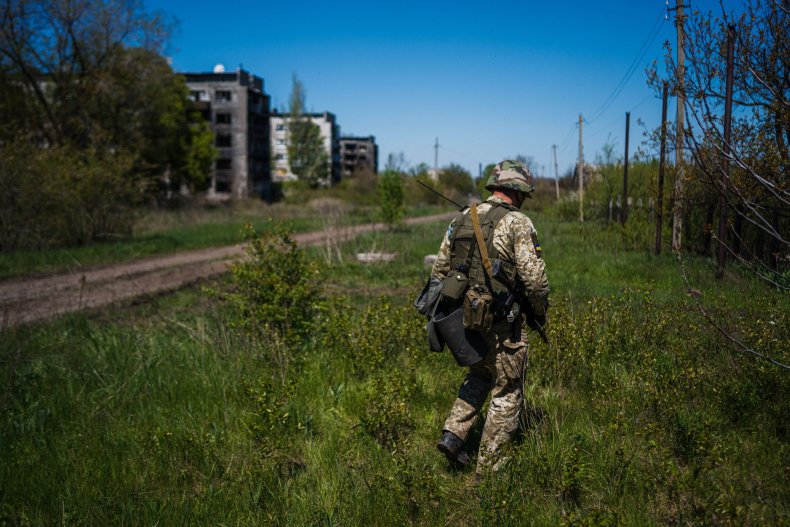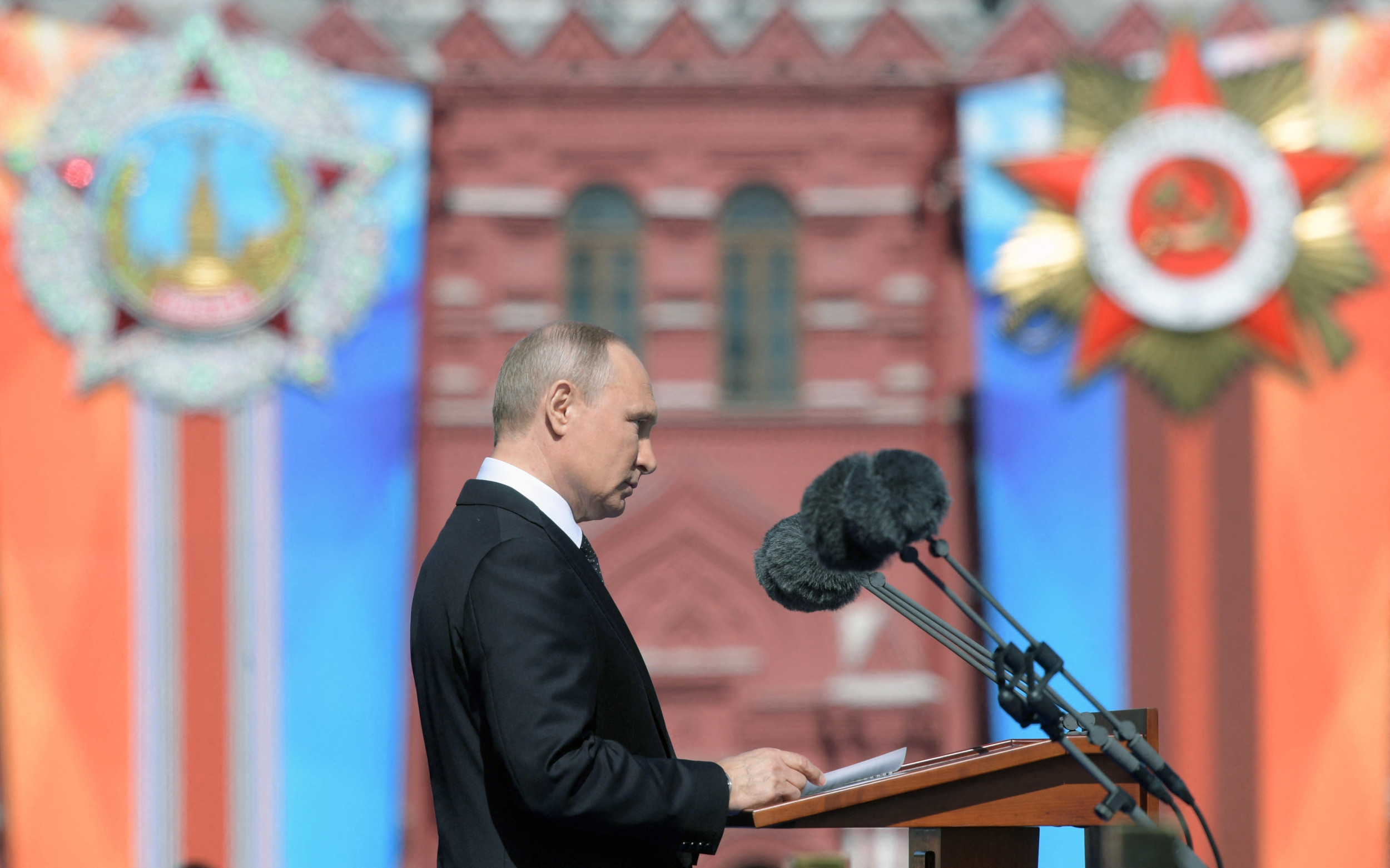Ukraine's Counteroffensive Is a Major Gamble | Opinion
The question was never whether Ukraine would launch a counteroffensive against Russian forces, but rather when. After a litany of preparation, we are getting closer to the answer: sometime soon, perhaps as early as a few weeks' time.
With an operation in sight, the Ukrainians have spent months training, building, and equipping new brigades to replenish their offensive combat power. The United Kingdom is in the process of training 20,000 Ukrainian troops, while the European Union boosted its own training program from 15,000 to 30,000 men. The United States continues the drumbeat of military support to the Ukrainian army, with the Biden administration close to announcing another $300 million security assistance package, which will include artillery and mortar ammunition, trucks, and rockets for Ukraine's fleet of combat aircraft. The Ukrainians are doing some re-organizing as well, with the Ukrainian interior ministry forming multiple "storm" brigades consisting of 40,000 troops, which will available to the army after further training. All of this is coming as Ukrainian defenders in the eastern city of Bahkmut, which long ago was reduced to rubble, continue to hold out despite wave upon wave of Russian infantry seeking to capture their last resupply road to the west.
The Ukrainians are setting the stage for an offensive with more frequent attacks inside Russian-occupied territory, not to mention inside Russia itself. While Kyiv is coy about claiming credit for operations inside Russian borders, it's reasonable to assume that at least some were carried out by Ukrainian operators. On May 3, an oil reservoir in the Russian village of Volna caught on fire. An explosive device damaged a section of railway in Bryansk, leading to derailment of 20 cars carrying cargo. A drone, purportedly at the hands of Ukraine, caused a fire at a Russian oil terminal in Crimea over the weekend. And in perhaps the most dramatic strike inside Russia to date, two drones targeted the Kremlin in what the Russian government called a Ukrainian-orchestrated assassination attempt against Russian President Vladimir Putin. Ukrainian presidential adviser Mykhailo Podolyak strongly denied the allegations.
The Russians aren't standing still as all of this is going on. Moscow continues to bombard Ukrainian cities mercifully with artillery, drones, and every kind of ballistic and cruise missile it can manufacture or pull out of storage. Kyiv may be over 400 miles away from the frontlines, but it's not immune to Russian missile or drone barrages—the latest occurred on Wednesday, when 26 Iranian-manufactured drones were launched toward the capital city (Ukrainian air defenses neutralized 21 of them).
More important to the Russians than sporadic air attacks is the establishment of a strong defensive line. While Russian troops and Wagner paramilitary forces are still on the attack in Bakhmut, much of Russia's attention in 2023 has focused on defense. After last fall's humiliating withdrawal from Kherson and the Kharkiv region, Moscow has gone to considerable lengths to ensure such a feat doesn't happen again. A mountain of fortifications and obstacles, from tank traps and trenches to mines, has been laid by Russian forces along the front, particularly in Zaporizhzhia, terrain critical to the land-bridge between Russia proper and Crimea. The de-facto border between Crimea and southern Kherson is heavily militarized and looks like a European version of the Korean Peninsula's Demilitarized Zone.

You don't have to be an expert in military science to realize that breaching these defenses is going to take a lot of resources and manpower. Offensive warfare, particularly against an adversary with a bigger economy, more draftees, and a larger defense industrial base is extremely tricky business. It's tricky even if you happen to hold all these advantages.
The Russian army spent the entire winter trying to break through Ukrainian defensive lines and has largely come up short. To the extent Russia has captured additional territory, a microscope is required to spot those gains on the map. Bakhmut still isn't fully captured after eight or nine months of assaults. Vuhledar, about 90 miles to the south, turned out to be an utter bloodbath for Russian forces, with poor command leadership, shoddy tactics, and stiff Ukrainian resistance resulting in the destruction of dozens of tanks for no conceivable gain. This week, the White House estimated that 20,000 Russian troops have been killed, and another 80,000 have been wounded since December, which averages to about 130 or so Russian fatalities every day for five straight months. While Russia's failed offensive certainly doesn't mean Ukraine's upcoming counteroffensive will meet the same fate, Russia's losses demonstrate just how deadly such assaults can be.
It's one thing to stay in place and defend a position. It's quite another to overtake it. The standard military ratio for a successful offensive is 3:1: for every defender, the offensive side needs three attackers to have a decent opportunity of accomplishing the objective. Ukraine simply doesn't have the numbers for a counteroffensive along the entire front, and the Ukrainian generals running the war have probably concluded that such a hypothetical scenario wouldn't be smart even if they had the resources. The Ukrainians will have to choose which section of the front is the most strategically valuable, and which can be put off to a later date. The Russians have suspicions that Zaporizhzhia is one of the more likely options.
Either way you look at it, Ukraine's counteroffensive is a major gamble. If it succeeds, the Ukrainian
government will be even more inclined to win militarily than they are today. But if it proves to be less than advertised as the U.S. intelligence community believes, then external pressure for Kyiv to negotiate with the Kremlin will likely get louder.
Daniel R. DePetris is a fellow at Defense Priorities and a syndicated foreign affairs columnist at the Chicago Tribune.
The views expressed in this article are the writer's own.








